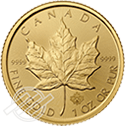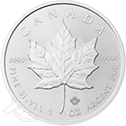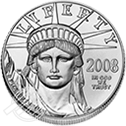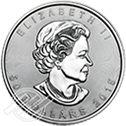Uncirculated Coins: What Are They & What Is Their Worth?
There’s an old saying, “Everything old is new again.”
That rings especially true for coin collectors, enthusiasts, and investors. In the world of uncirculated coins, anything old that’s new is the holy grail.
But what are uncirculated coins, and what are uncirculated coins worth?
This guide will teach you what you need to know to spot an uncirculated coin. We will arm you with the knowledge you need. The rest is up to you.
What Are Uncirculated Coins?
Uncirculated coins are coins struck by a government mint but never introduced into the money supply.
The mint sometimes pulls coins to prevent circulation. Whether the pull is due to a printing error or an executive order, those coins become rare.
Some collectors visit local banks and buy coins before they enter the world. In modern markets, they sell as collectibles.
The U.S. Mint strikes and offers collectible, uncirculated coins for collectors and investors.
It hand-loads special blanks, which have a soft, matte-like finish, into the press it uses for everyday coins. The mint makes the coins with a special process that produces a brilliant finish. Government-minted, special-edition uncirculated coins include a certificate of authenticity.
Historical Background of Uncirculated Coins
The United States Mint began selling the Uncirculated Set or Mint Set of coins in 1947. The first sets included two coins, so the collector could display both the front and the back.
By 1959, cellophane packaging made it possible to view both sides of the coin. Mint sets were reduced to one coin. One coin—instead of two—meant lower costs. The decrease in price led to an increase in popularity among the general public.
Collector demand for uncirculated coins became so strong that by 1964 there was a coin shortage. In an attempt to slow collectors, The Coinage Act of 1965 removed mint marks from coins, and no mint sets were produced again until 1968.
Consumers had proven their appetite for uncirculated coins. Mint sets are popular to this day.
Even with superior technology and craftsmanship, the US Mint sometimes makes errors. The errors may include double striking of coins, dye errors, or planchet (coin blanks) errors.
If caught in time, the coins may be pulled and never put into circulation. The rare, surviving coins can become very collectible and extremely expensive.
One example of coin value skyrocketing after being pulled happened not because of a mistake, but a change in monetary policy.
The last true backing of U.S. currency with gold ended in 1933, when President Franklin Roosevelt eliminated the gold standard. In an attempt to prevent a run on the dollar, he ordered the Federal Reserve to collect existing $20 gold pieces. The Saint-Gaudens (double eagles) consequently removed from circulation redeemed for $20 of paper money.
Many Americans defied the decree to sell back the coins and kept those shiny gold pieces in their pockets.
The U.S. Mint last struck gold double eagles in 1933. But President Roosevelt ordered them destroyed before entering circulation. Several of the coins survived, uncirculated. Most sit on display in museums.
There is only one 1933 Saint-Gauden double eagle in private ownership. It is worth upward of $20 million.
Not bad for a $20 face value coin.
The Importance and Appeal of Collecting Uncirculated Coins
Collectors and investors seek what’s scarce. Uncirculated coins fit that bill.
Nowadays, most uncirculated coins originate from curated mint sets. Investors and collectors love the appeal of an unblemished, shiny piece of metal. Many search out and appreciate the beauty and tremendous craftsmanship.
Demand is high for older uncirculated coins. They fetch thousands of dollars on the open market, often spurring bidding wars.
Investors use uncirculated coins as a speculative investment. The uncirculated coins often see significant increases in value over time. There’s an art to choosing them, but those who do it well reap the rewards.
Are Uncirculated Coins Valuable?
The simple answer is: maybe.
Scarcity and demand determine the value of uncirculated coins. They are valuable if few exist and collectors and investors clamor to own them.
Remember one thing when someone asks, “Are uncirculated coins valuable?” What a buyer is willing to pay determines their value. Nothing more. Nothing less.
That rare double eagle in a private collection? Shoe designer Stuart Weitzman—an avid collector—bought it for $7.6 million in 2002. It sold for almost $19 million, plus a buyer’s premium, in 2021.
Choose wisely.
Identifying Uncirculated Coins
Experts identify uncirculated coins by examining the type of wear on the coin.
The minting process creates a luster on the face of an uncirculated coin. Coins should have mint luster—known as the “cartwheel effect.” The luster appears as rotating light across the surface and high points of the coin.
Coins added into circulation make contact with other coins, causing degradation. An uncirculated coin shows no wear on its high points, and the light flows across the entire surface of the coin.
That is not to say uncirculated coins are or have to be perfect.
Marks and nicks on the edges of a coin occur without a coin making it into circulation. Contact marks—small scratches and marks caused by coins contacting in bags or at the mint—are common.
Experts check a coin’s condition. They differentiate between marks from light contact and marks caused by circulation.
The expert measures the coin’s condition and assigns a grade to the coin.
The Professional Coin Grading Service (PCGS) provides the industry standard for coin grading. It inspects and assigns a mint state (MS) grade reflecting an uncirculated coin’s condition.
- MS-60 is the lowest grade. Uncirculated coins at this level are dull and show little to no luster. They have nicks, contact marks, scuff marks, and rim nicks. They do not appeal to the eye, but they show no evidence of wear.
- MS-70 is the highest grade. Coins graded at 70 are perfect. The luster is high. The coin has no marks, scuffs or defects. It is pleasing to the eye.
Most coins fall somewhere among the other nine MS grades.
What Are Uncirculated Coins Worth?
MS grade is one of the determinant factors of a coin’s worth. A coin with an MS-70 grade is less common than one with an MS-60 grade.
Scarcity drives up the prices of coveted coins with high grading. The demand is high because there are so few of them.
Coin auctions get heated as buyers compete to own a special coin. That demand—even if only between two buyers—coupled with a low supply can send values soaring.
It is not uncommon to see exponential price growth in rare uncirculated coins.
Manufacturers like the U.S. Mint offer special edition uncirculated coins. These inexpensive coins include packaging to keep their condition perfect.
Many speculators invest in these coins with the hopes of future appreciation.
Buying and Selling Uncirculated Coins
Full-service precious metals firms—like Advantage Gold—are a great place to buy and sell uncirculated coins.
We assist you with locating and purchasing your dream coins. We direct-deliver them—insured—to your door.
Advantage Gold offers a vibrant two-way marketplace for our clients. When you’re ready to sell your coins, we will buy them back.
Many investors want uncirculated coins but don’t want collectibles. They turn to the precious metals individual retirement account (IRA).
The Gold IRA and Silver IRA function like a traditional IRA. This self-directed account includes investment options of physical gold, silver, platinum, and palladium.
All IRA-eligible coins must be new, uncirculated, and in perfect physical condition. They must originate from government mints.
Uncirculated coins make a great foundation for any portfolio.
Call us today. An account executive will walk you through the process and show you how easy it is to own uncirculated coins.
You can also click the link and let us know how to contact you.
We’re here, and we’re happy to help.
Tags: are uncirculated coins valuable, can you spend uncirculated money, what are uncirculated coins worth


